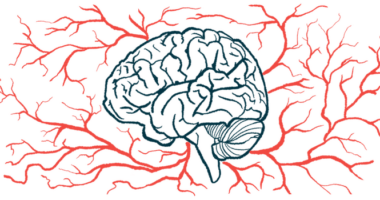ALS and MS have very strong geographic association, study finds
Results imply some type of environmental factors may increase disease risk

Amyotrophic lateral sclerosis (ALS) is more common in some parts of the U.S. than others, and it has a very strong geographic association with multiple sclerosis (MS), a new study suggests.
The finding implies that some type of environmental factors may be increasing the risk of both ALS and MS.
“The results of the study are surprising because previous studies have typically concluded there was no evidence for a mechanistic or genetic link between the two diseases,” Melissa Schilling, PhD, a professor at New York University and sole author of the study, said in a university news story.
The study, “The geographic association of multiple sclerosis and amyotrophic lateral sclerosis,” was published in Scientific Reports.
Geographic associations emerged when analysis was broken down by gender
ALS and MS are both chronic disorders that affect the nervous system, but they don’t share many other similarities — ALS usually progresses much faster than MS, and MS is considered an autoimmune disease, whereas ALS is not.
The causes of both ALS and MS aren’t fully understood, but scientists have had little reason to think the two diseases might be caused by the same thing. This is partly because previous geographic analyses found no association with the prevalence of ALS and MS.
In this study, Schilling analyzed U.S. mortality data and found that there was no geographic association when analyzing all patients collectively. But when the analysis was broken down by gender, with men and women analyzed separately, there were clear geographic associations.
This relationship was not previously identified in part because of a Simpson’s paradox in the data: strong correlations that are obvious in the data when they are separated by gender are obscured when the data are pooled across gender.
In statistics, this phenomenon, in which an association is evident in two groups separately, but seems to disappear when the groups are combined, is known as Simpson’s paradox. Of note, ALS is more common in men, while MS primarily affects women.
“This relationship was not previously identified in part because of a Simpson’s paradox in the data: strong correlations that are obvious in the data when they are separated by gender are obscured when the data are pooled across gender,” Schilling wrote in the study.
Schilling added in the press release that she was “very surprised to find such a strong geographic pattern, as most of the research on ALS does not emphasize the role of geography. I was even more surprised to find that ALS has a very strong association with the geography of MS.”
Environmental factors may affect both ALS and MS
Previous studies have suggested that the prevalence of MS varies by latitude — as a general rule, MS is more common in areas further from the equator. The reasons for this aren’t fully understood, but it’s thought that lower exposure to sunlight and consequent vitamin D levels may play a role.
Although MS and ALS tended to be more common in northern areas than southern parts of the country, the variation didn’t cleanly follow latitude. For example, both diseases were markedly more common in the Pacific Northwest than in New England, even though these two areas lie at roughly the same latitude. This variation suggests there are likely other factors contributing to both diseases.
“The data here suggest that the diseases have a much stronger geographic association with each other than either does with latitude, and these results hold even after controlling for gender, race, wealth, and access to neurological healthcare,” Schilling wrote in the study.
Schilling proposed three potential explanations for these findings. One possibility is that there are environmental factors that affect both ALS and MS. Schilling noted that these environmental factors could include biological agents like viruses and molds, or human-made factors like industry and chemical contamination.
“This finding is important because it suggests that an environmental factor likely plays a significant role in both diseases, and that could provide clues that help us determine what causes them and how they might be avoided or treated,” Schilling said in the press release. “The list of suspects is long, but comparing across geographies and, in particular, across outlier locations, such as the Faroe Islands, where MS increased strikingly after military troops arrived there in the 1940s, could significantly narrow the hunt.”
Another potential explanation is that certain, yet unknown genetic variations may affect the risk of both ALS and MS, and these variants may be more common in some populations than others, leading to apparent variations in geographical distributions.
Schilling also acknowledged a third possibility: that there might be some sort of systematic error in the data leading to inaccurate results, such as MS being misdiagnosed as ALS. She stressed the importance of additional studies to replicate and validate these findings.








